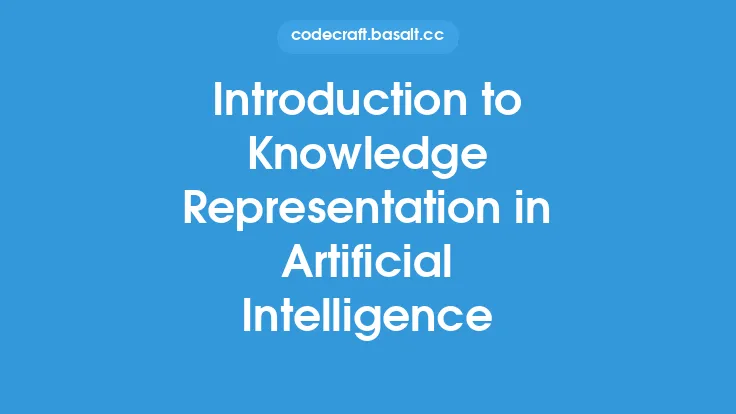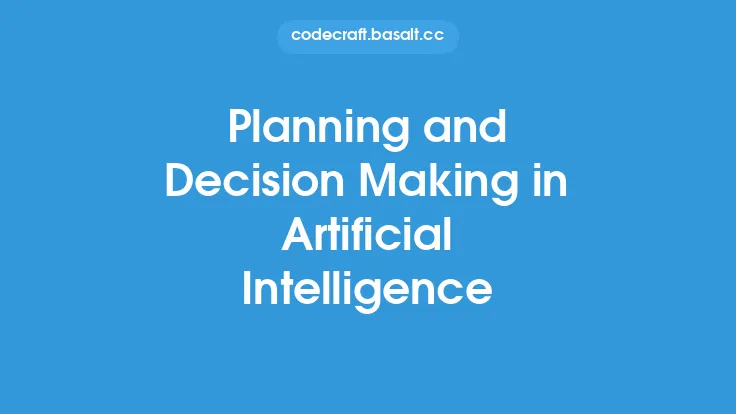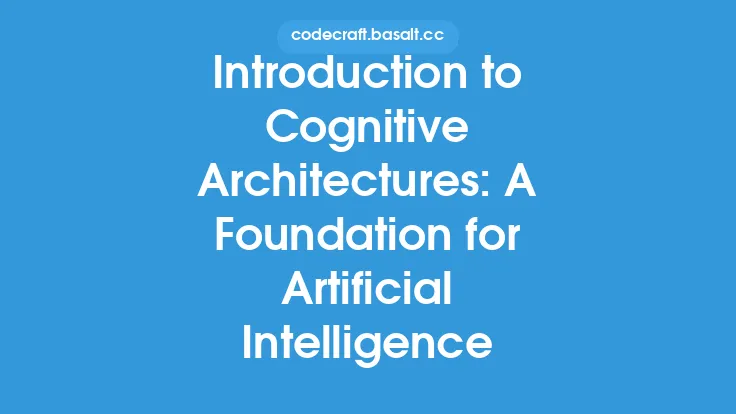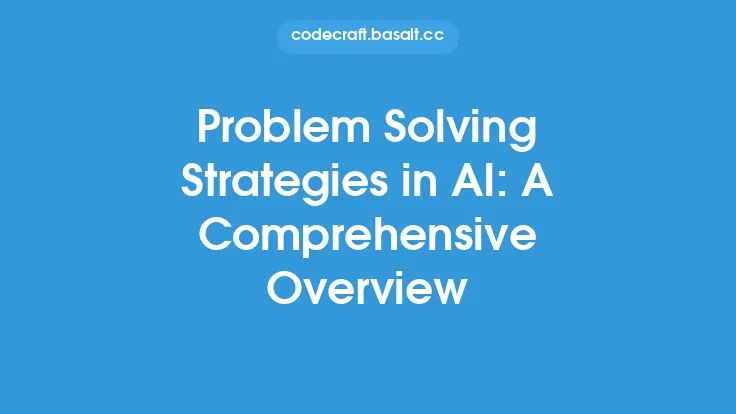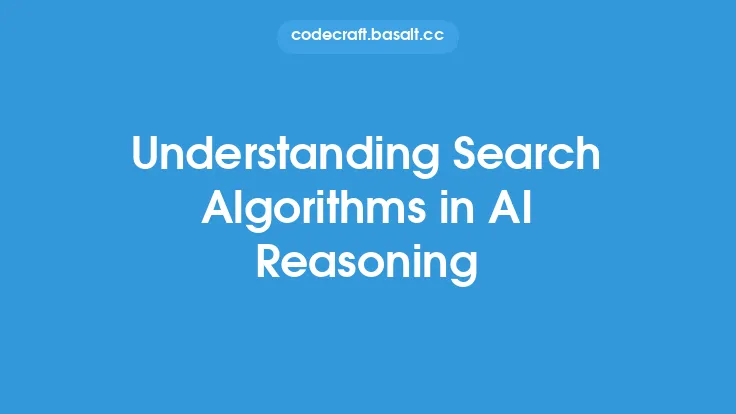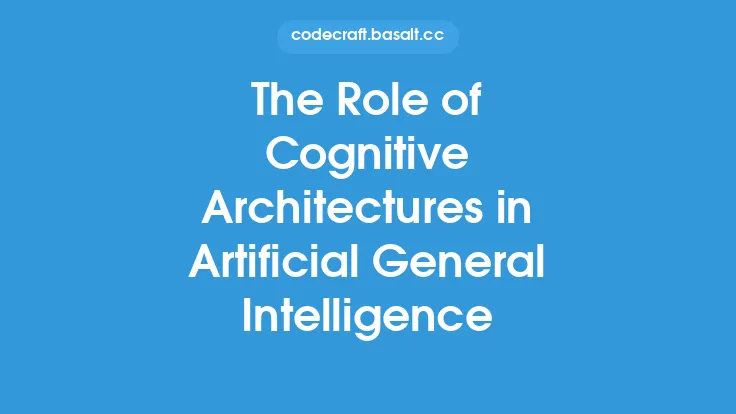Artificial intelligence (AI) has become an integral part of modern technology, and its applications are vast and diverse. At the heart of AI lies the ability to reason and solve problems, which enables machines to make decisions, learn from experience, and adapt to new situations. Reasoning and problem-solving are fundamental components of AI, and understanding how they work is essential for developing intelligent systems.
History of Reasoning and Problem Solving in AI
The history of reasoning and problem-solving in AI dates back to the 1950s, when the first AI programs were developed. These early programs were based on simple rules and heuristics, and they were able to solve specific problems, such as playing chess or solving puzzles. As AI research progressed, more advanced techniques were developed, including logical reasoning, decision trees, and expert systems. The 1980s saw the rise of knowledge-based systems, which used large databases of knowledge to reason and solve problems. Today, AI systems use a wide range of techniques, including machine learning, deep learning, and optimization algorithms, to reason and solve complex problems.
Types of Reasoning in AI
There are several types of reasoning used in AI, including deductive, inductive, and abductive reasoning. Deductive reasoning involves drawing conclusions from a set of premises using logical rules. Inductive reasoning involves making generalizations from specific instances. Abductive reasoning involves making educated guesses or hypotheses based on incomplete information. Each type of reasoning has its strengths and weaknesses, and AI systems often use a combination of these techniques to solve complex problems.
Problem-Solving Strategies in AI
AI systems use a variety of problem-solving strategies, including divide and conquer, dynamic programming, and greedy algorithms. Divide and conquer involves breaking down a complex problem into smaller sub-problems, solving each sub-problem, and then combining the solutions. Dynamic programming involves solving a problem by breaking it down into smaller sub-problems, solving each sub-problem only once, and storing the solutions to sub-problems to avoid redundant computation. Greedy algorithms involve making the locally optimal choice at each step, with the hope that these local choices will lead to a global optimum. These strategies are often used in combination with other techniques, such as search algorithms and optimization methods.
Knowledge Representation in AI
Knowledge representation is a critical component of AI, as it enables machines to store, retrieve, and manipulate knowledge. There are several types of knowledge representation, including propositional logic, first-order logic, and semantic networks. Propositional logic involves representing knowledge using simple propositions and logical operators. First-order logic involves representing knowledge using predicates, variables, and logical operators. Semantic networks involve representing knowledge using nodes and edges, where nodes represent concepts and edges represent relationships between concepts. AI systems often use a combination of these techniques to represent knowledge and reason about the world.
Reasoning and Problem-Solving in Expert Systems
Expert systems are AI programs that mimic the decision-making abilities of a human expert in a particular domain. They use a knowledge base to store information about the domain, and an inference engine to reason about the knowledge and make decisions. Expert systems are often used in applications such as medical diagnosis, financial analysis, and engineering design. They are particularly useful in domains where there is a large amount of knowledge and a well-defined set of rules for making decisions.
Challenges and Limitations of Reasoning and Problem-Solving in AI
Despite the advances in AI, there are still many challenges and limitations to reasoning and problem-solving. One of the main challenges is the complexity of real-world problems, which often involve incomplete or uncertain information. Another challenge is the need for common sense and real-world experience, which can be difficult to replicate in a machine. Additionally, AI systems can be brittle and prone to errors, particularly when faced with unexpected or unusual situations. Finally, there are concerns about the transparency and explainability of AI decision-making, particularly in applications such as healthcare and finance.
Future Directions of Reasoning and Problem-Solving in AI
The future of reasoning and problem-solving in AI is exciting and rapidly evolving. One of the main areas of research is the development of more advanced machine learning and deep learning techniques, which can learn from large datasets and improve their performance over time. Another area of research is the development of more transparent and explainable AI systems, which can provide insights into their decision-making processes. Additionally, there is a growing interest in the development of hybrid systems, which combine symbolic and connectionist AI techniques to achieve more robust and flexible reasoning and problem-solving. Finally, there are many potential applications of AI reasoning and problem-solving, including robotics, natural language processing, and computer vision.
Conclusion
Reasoning and problem-solving are fundamental components of AI, and understanding how they work is essential for developing intelligent systems. AI systems use a wide range of techniques, including logical reasoning, decision trees, and optimization algorithms, to reason and solve complex problems. Despite the challenges and limitations, the future of reasoning and problem-solving in AI is exciting and rapidly evolving, with many potential applications in areas such as robotics, natural language processing, and computer vision. As AI continues to advance, we can expect to see more sophisticated and powerful reasoning and problem-solving capabilities, which will enable machines to make better decisions, learn from experience, and adapt to new situations.
